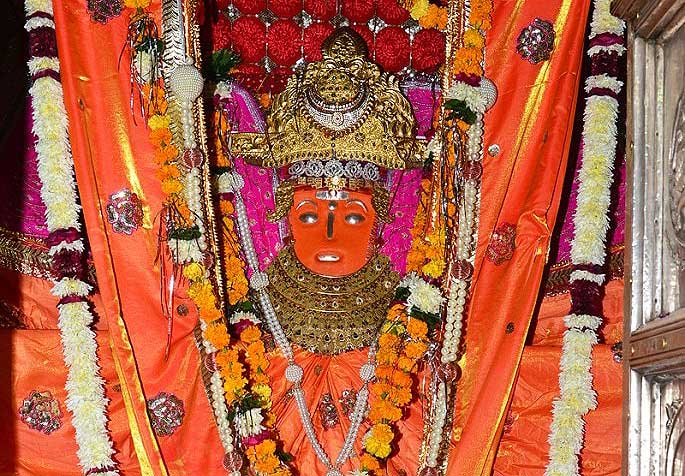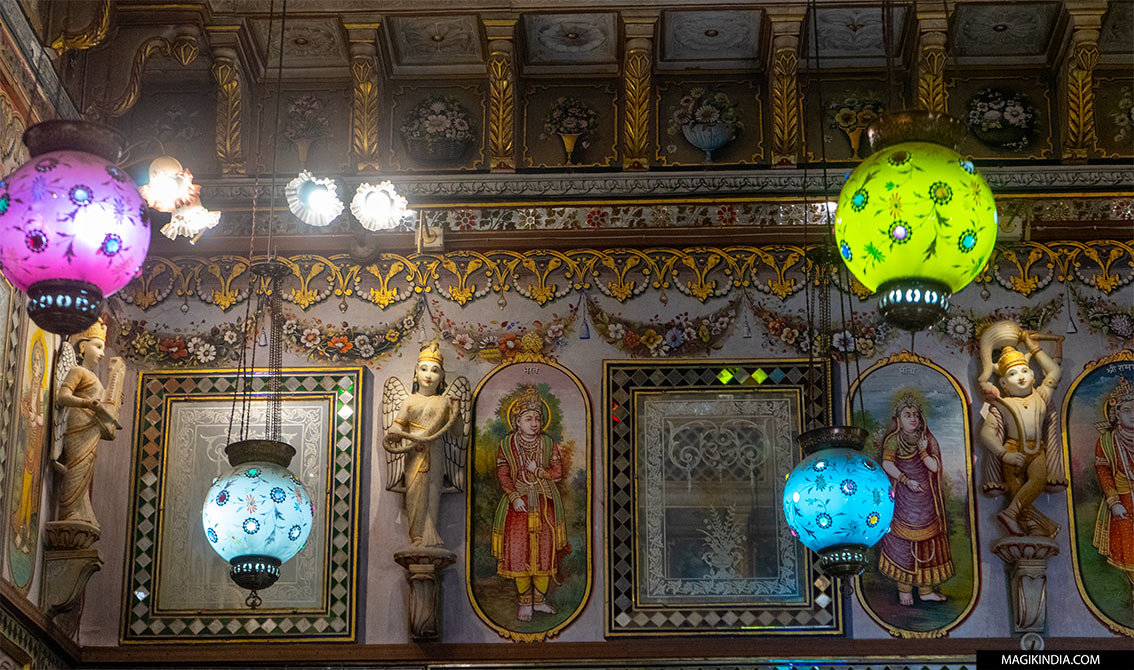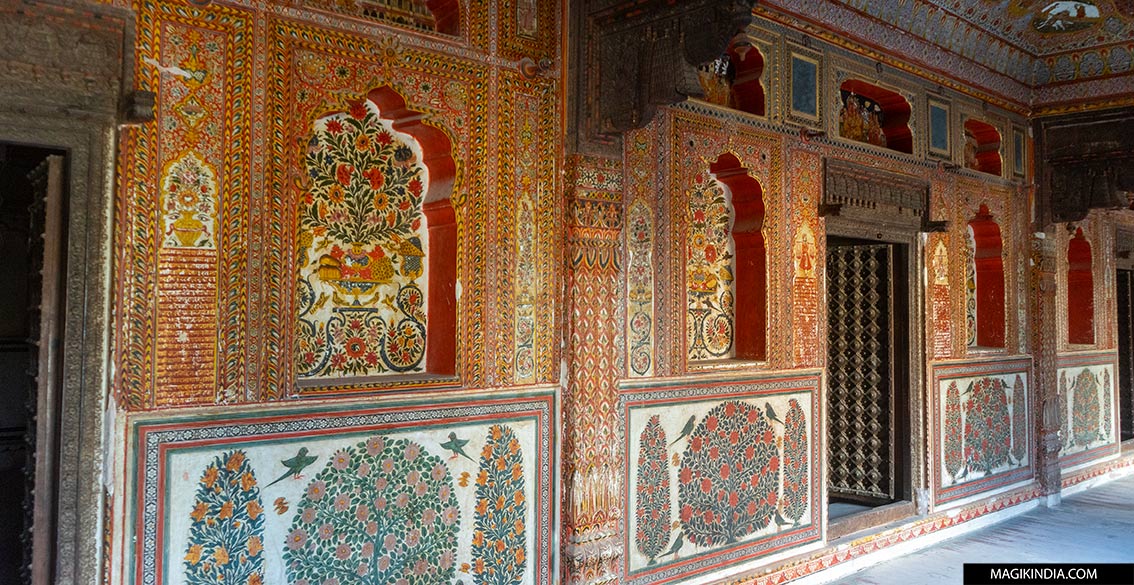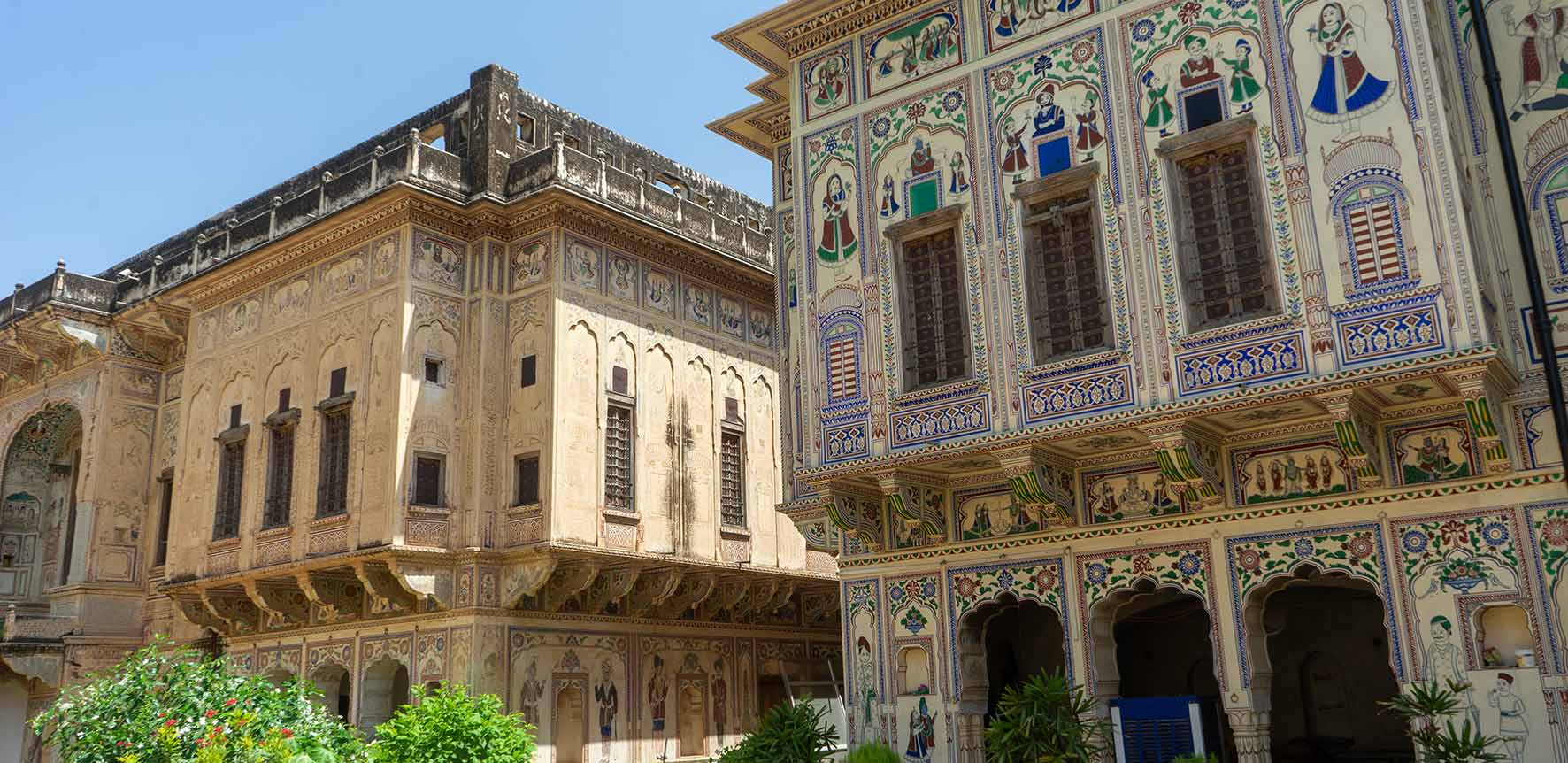
Harshnath, the forgotten hill of Shekhawati
Harshnath, located on the Aravalli hill of Harshagiri, 900 meters above sea level, is the beautiful archaeological surprise of Sikar district (Rajasthan). This group of temples, the oldest of which dates back to the 10th century AD, is still little known to travelers.
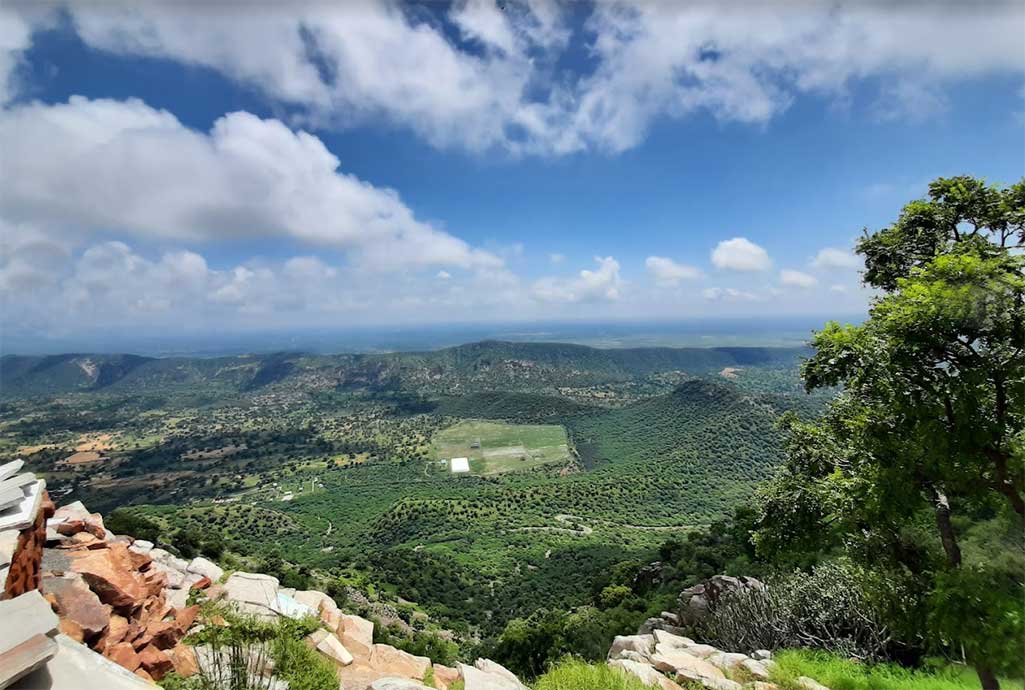
We have to drive more than half an hour via a winding road to reach the Harshnath site. A decade ago, this route did not exist and pilgrims had to climb hundreds of steps to the top of the hill. The panorama over the plain and the mountains of the Aravalli range is superb.

When we arrive, the first recognizable building is a small, simple temple with a very pointed sikhara (a bell tower). At that moment we think that it is the main temple and we are a little disappointed.
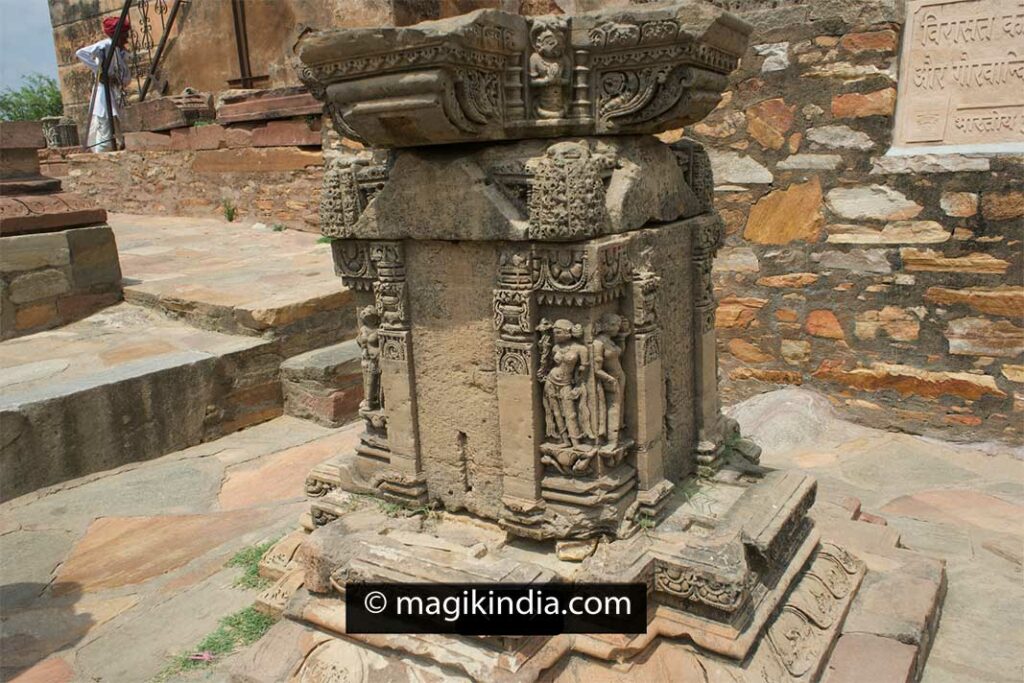
In fact, the main Harshnath temple stands on the left. It is in ruins and no longer has a Sikhara, which is why you don’t notice it right away. However, despite its dilapidated state, this temple deserves to be classified among the archaeological wonders of Rajasthan.
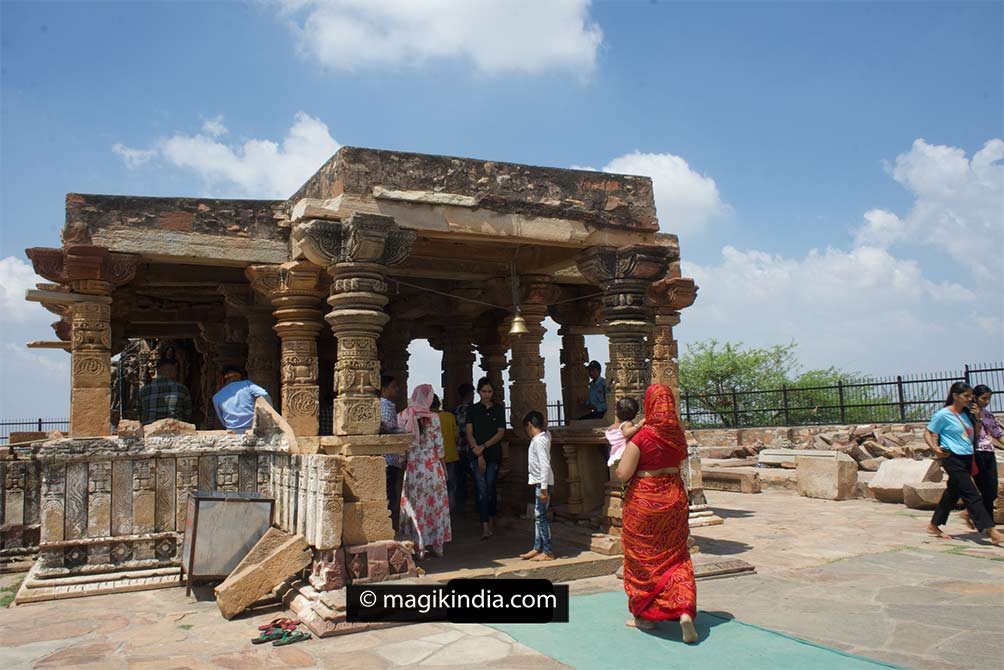
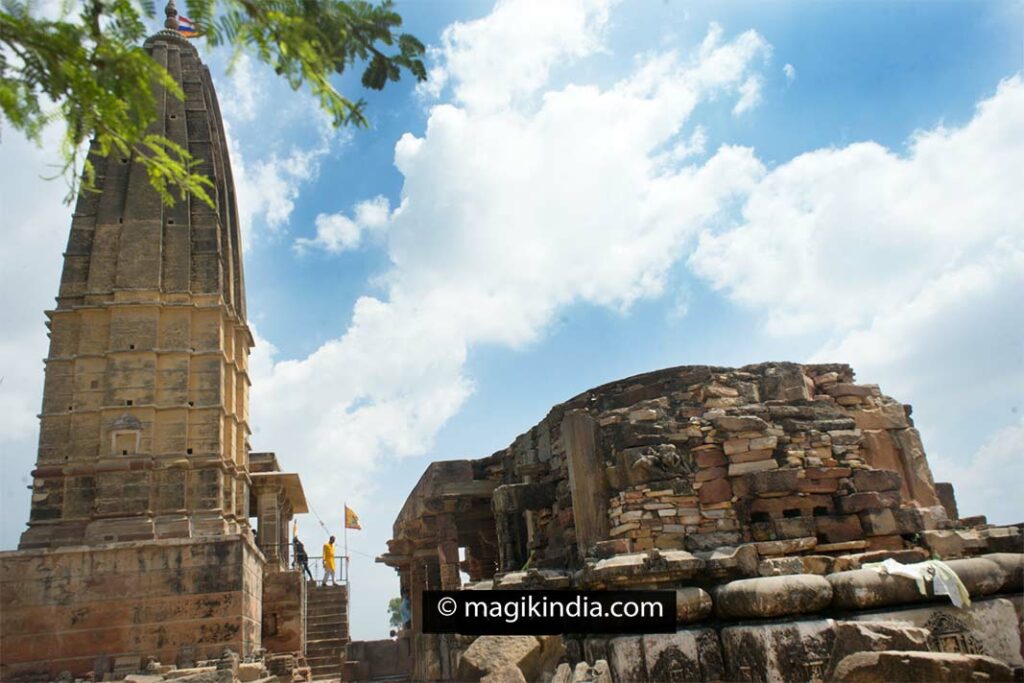
According to the inscriptions found on the site, it was built between 956 CE and 957 CE under the leadership of the Shivaist ascetic Bhavarakta, alias Allata, during the reign of the ruler Vigraharaja I of the Chahamana dynasty. It was then surrounded by numerous minor temples whose ruins are scattered all around.
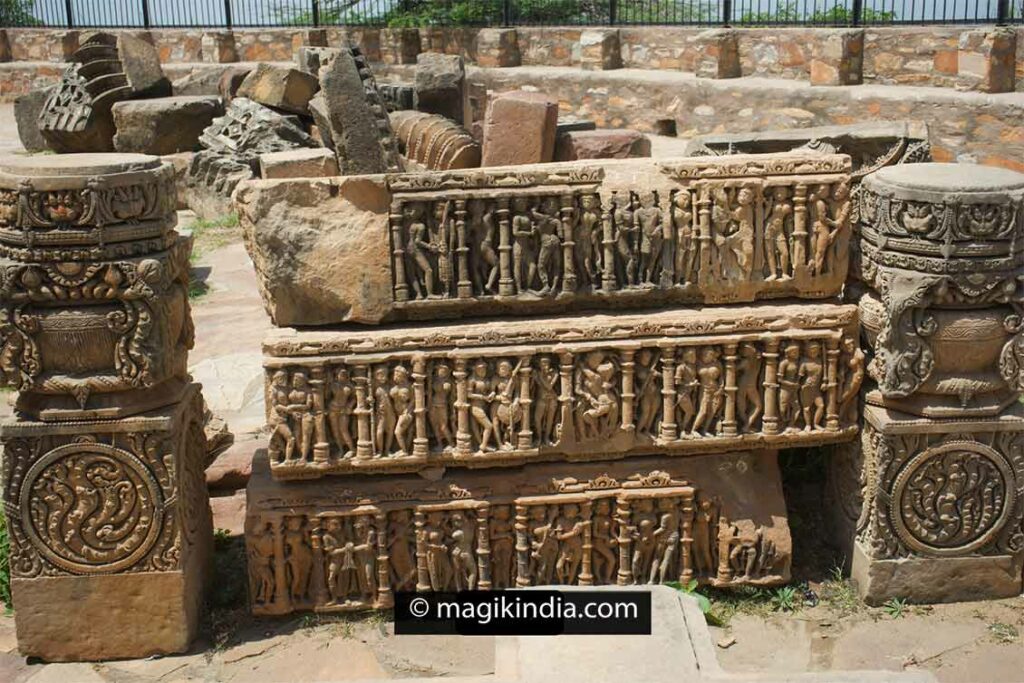
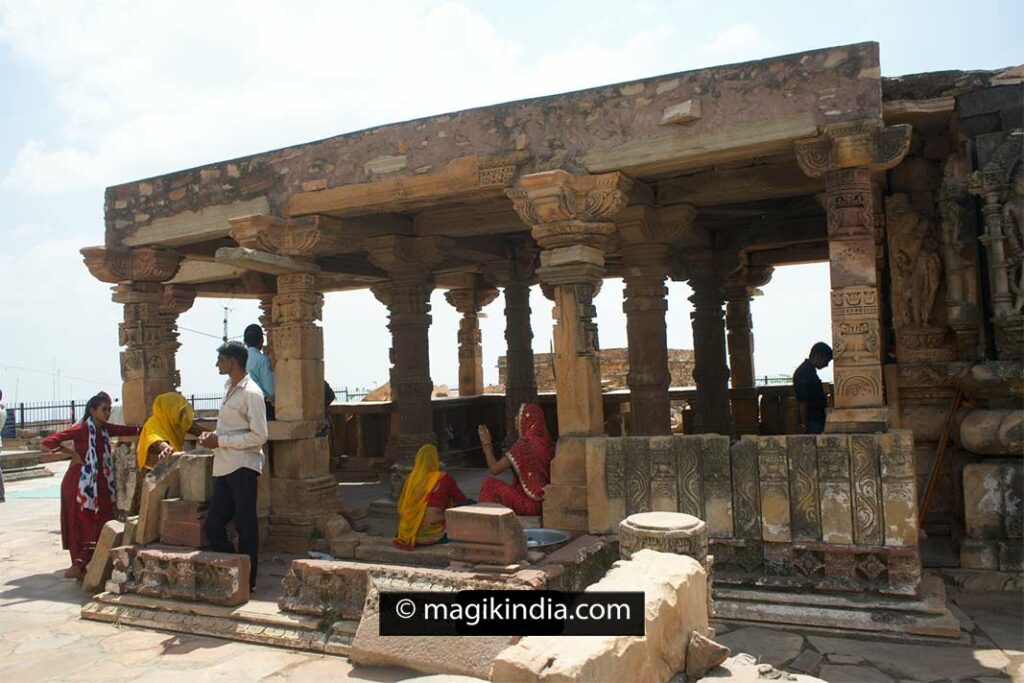
The temple is pancharatha in shape, that is to say that its tower had on each of its four sides five rathas, a kind of vertical projections. The “ranga mandapa” or “music and dance hall” has four central pillars and side transepts with balustrades.

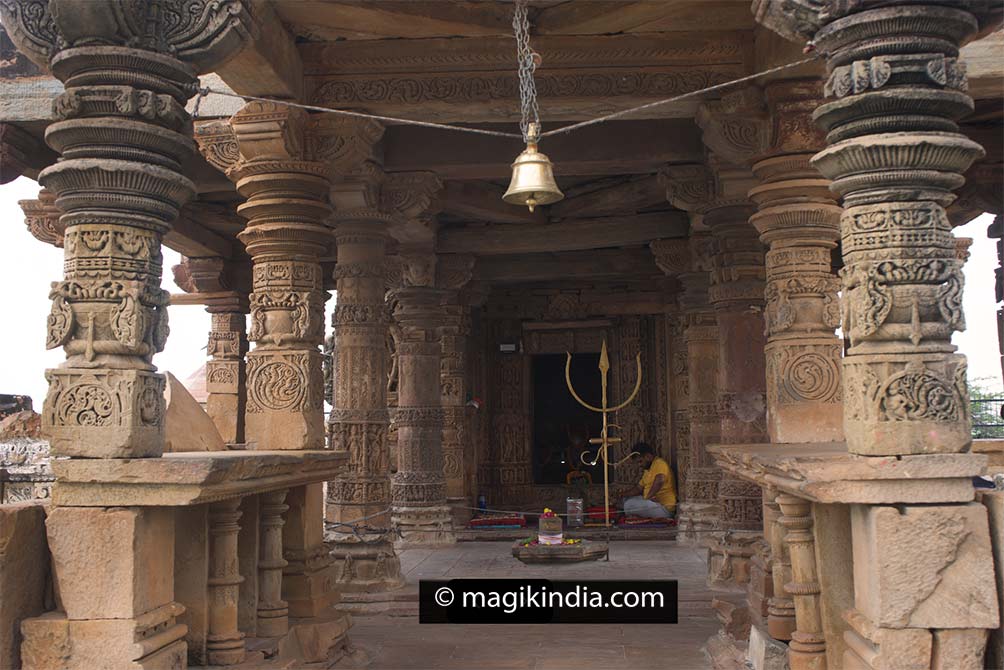
In the middle of the mandapa is a small Shiva-lingam, dating from the same period as the temple, probably one of the remains of the minor temples of the site.
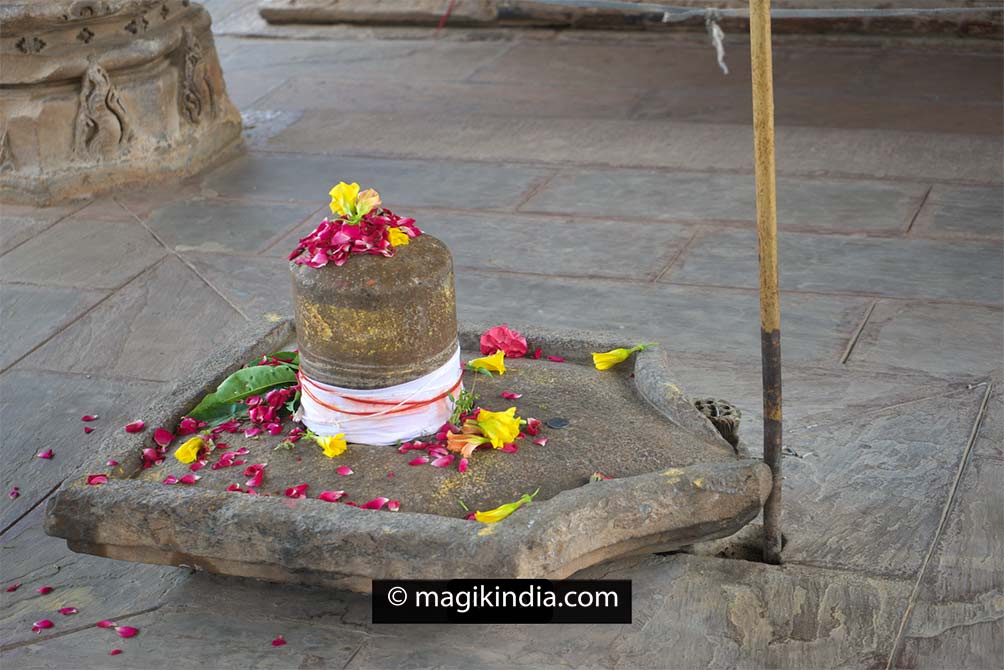
The garbhagriha (main sanctuary) houses the original lingam as well as sculptures of the goddess Parvati, Shiva’s consort, with her attendants.
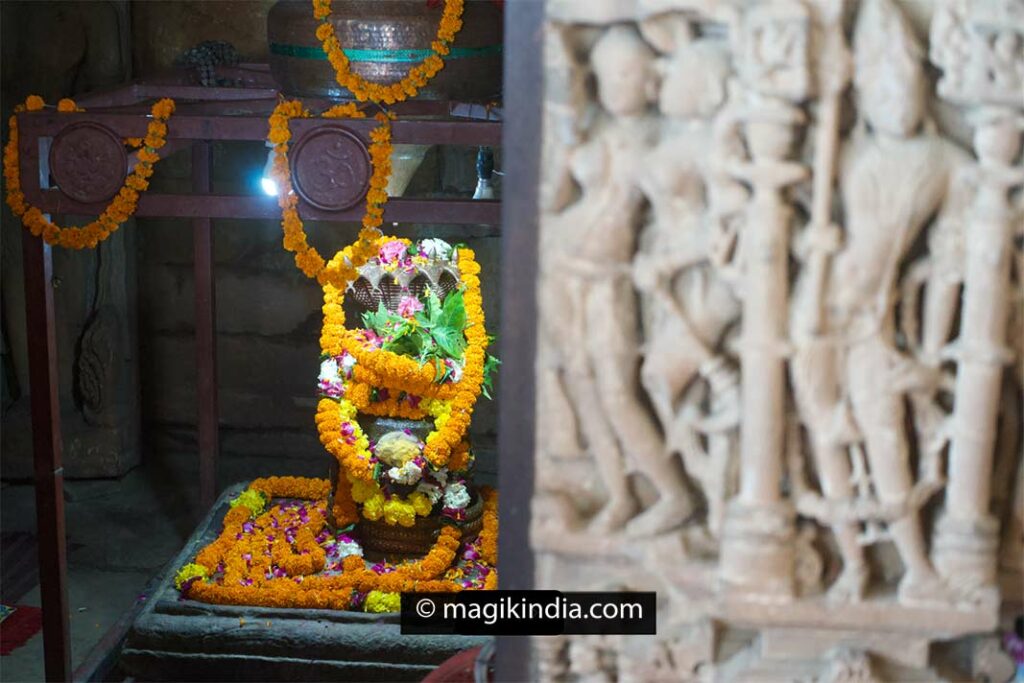
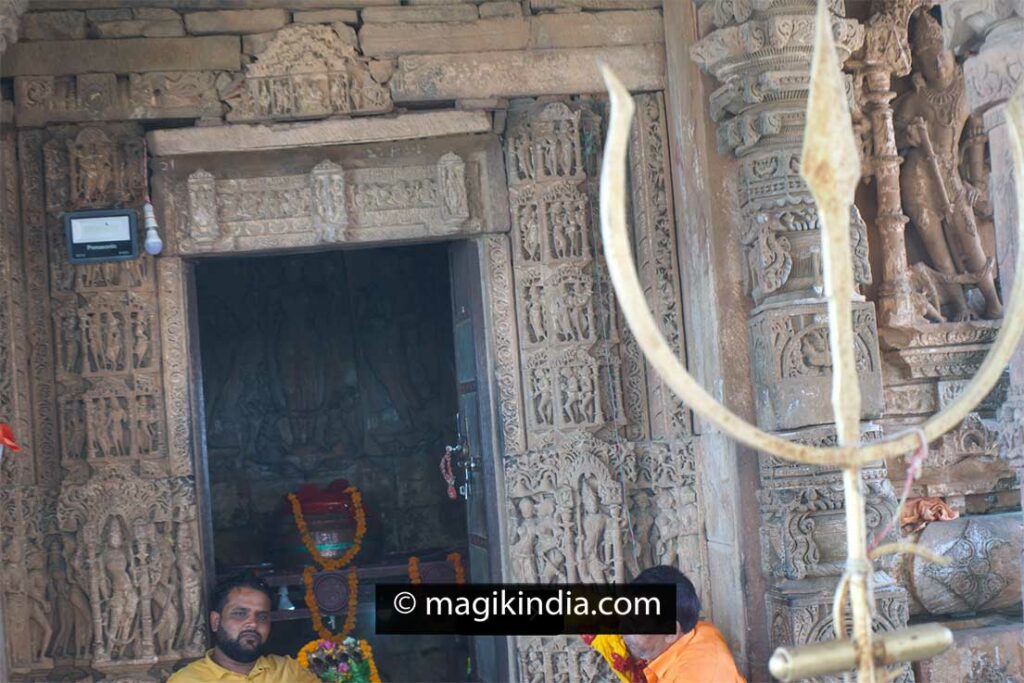
The statue of Nandi, the divine bull, Shiva’s mount (vahana), is located outside the temple, carved from a single block of white marble. It seems more recent than the 10th century temple, but nothing is said about this.
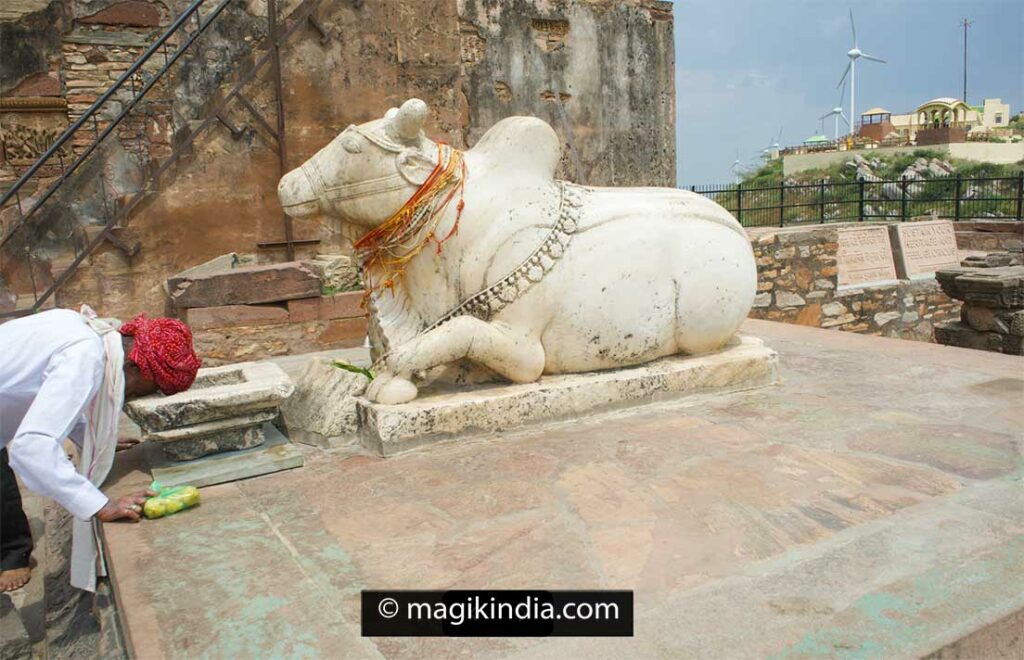
The sculptures of the temple make up its beauty. Its pillars are profusely decorated with Kirtimukha deities, dancers, warriors and watches.
The images of deities, on what remains of the Sikhara (bell tower), are particularly remarkable. It shows voluptuous women, apsaras or goddesses, standing in “tribhanga”, an artistic “S”-shaped curvature used in classical Odissi dance.
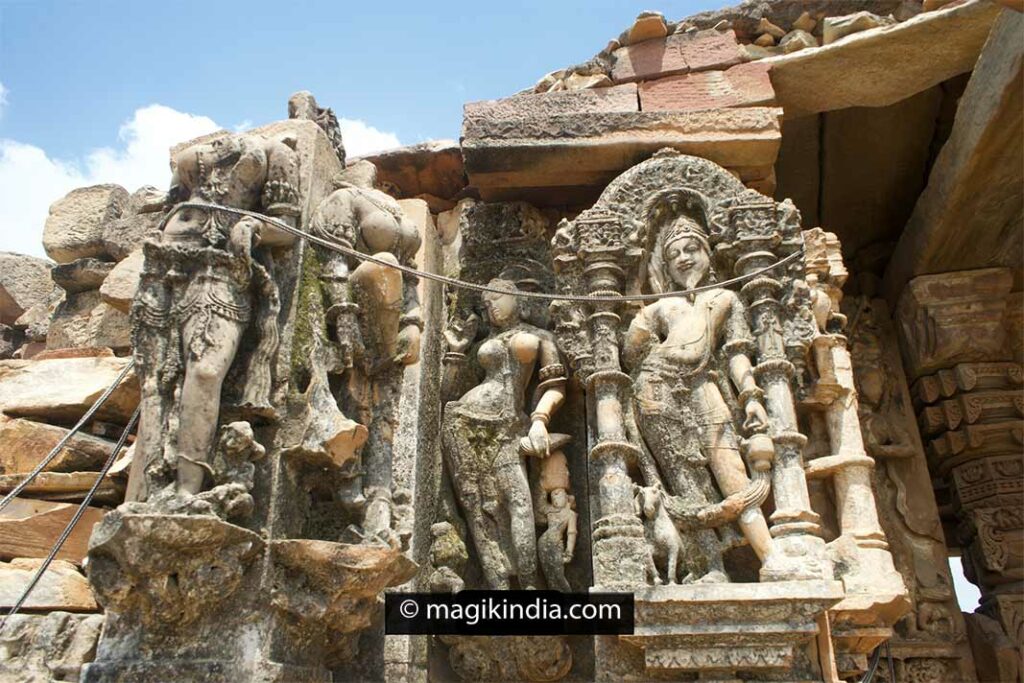
Another statue represents “Agni dev” (the god of fire), one of the major deities of the Vedic era (ancient India) alongside Vayu (the god of wind) and Surya (the god of the sun). His mount is the ram, a sacrificial animal.
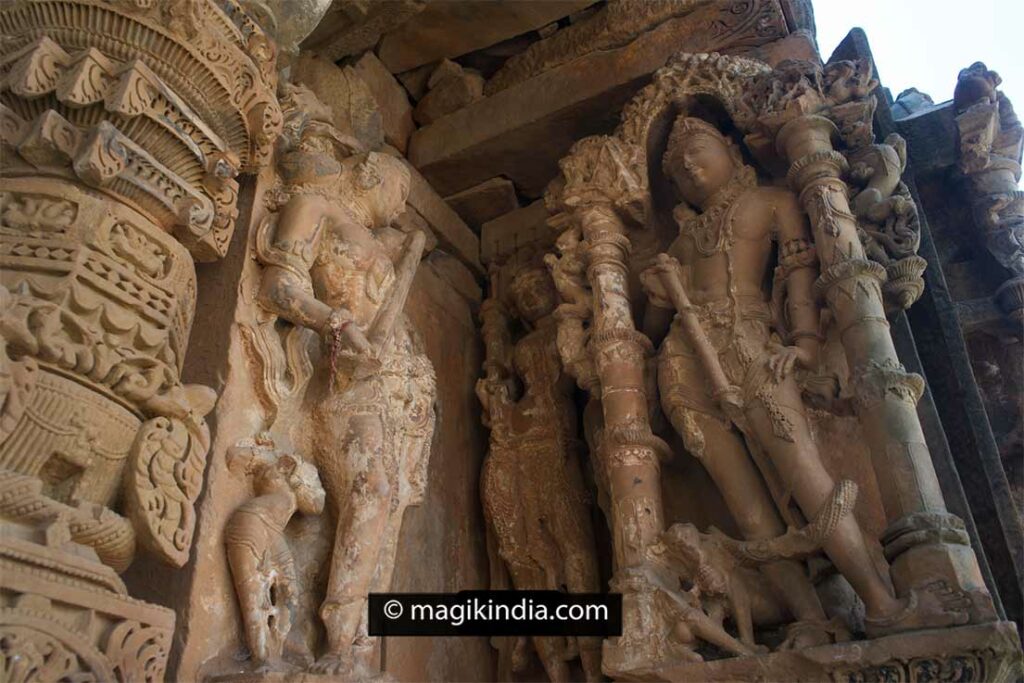
The Harshnath temple was completely destroyed by the armies of the Mughal emperor Aurangzeb in 1679. In 1718 CE, the ruler Rao Shiv Singh of Sikar, set about rehabilitating the site. A new temple, also dedicated to Shiva, was built to the right of the old one, but without its charm.

The complex has another surprise in store for us: we have to go north in the relentless heat to discover a temple dedicated this time to Bheruji (Bhairav) which represents the god Shiva in his fierce form. There is no mention of the age of the place, however we note that it was (re)built with pieces of ruins.
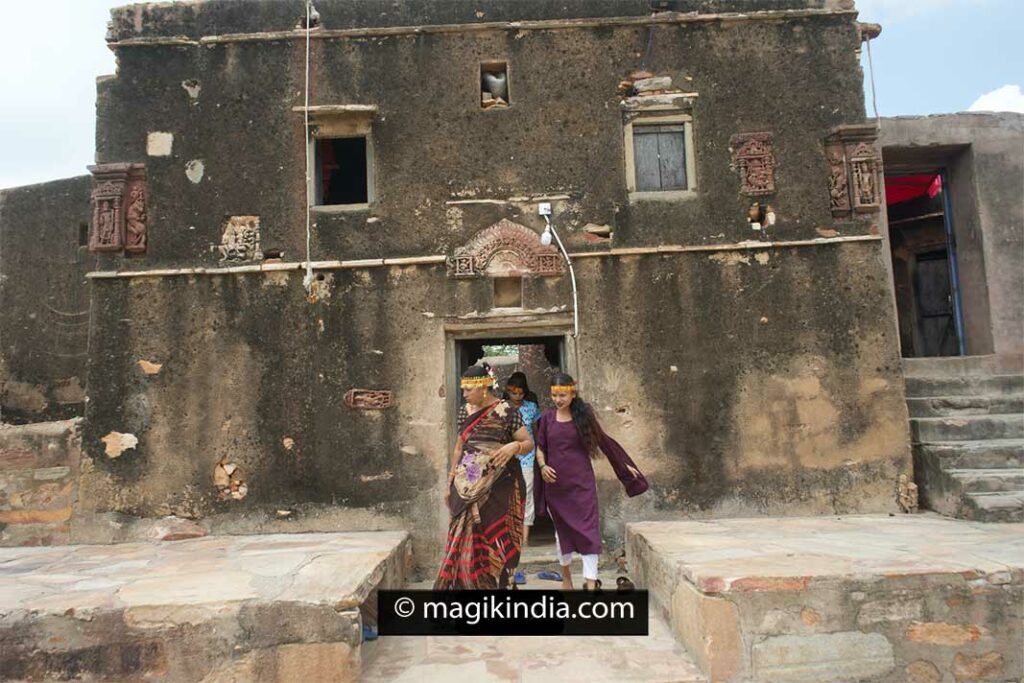
At the entrance to this third temple, a superb ancient statue catches my eye: that of a woman with the head of an elephant; it is a very rare form in India. His identification has not been definitively determined. Some scholars believe that it is the “Shakti” of the Hindu god Ganesha, i.e. his female form and hence takes the name Vinayaki or Ganeshani.
Others believe that he is a separate deity linked to tantra practices. It is seen in certain temples of the 64 Yoginis such as Hirapur in Odisha or Bhedaghat in Madhya Pradesh. In this case, her name is Sri Aingini.
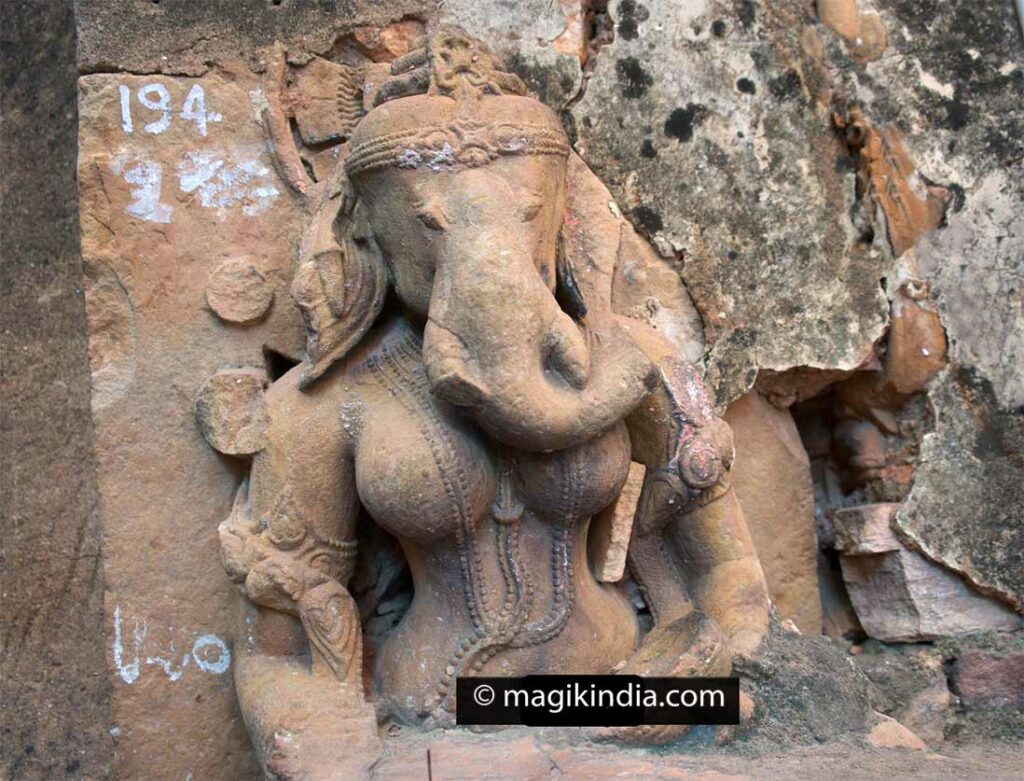
A flight of steps then leads us to a small shrine with the ancient image of Durga, then, further down, to the main temple of Bheruji.
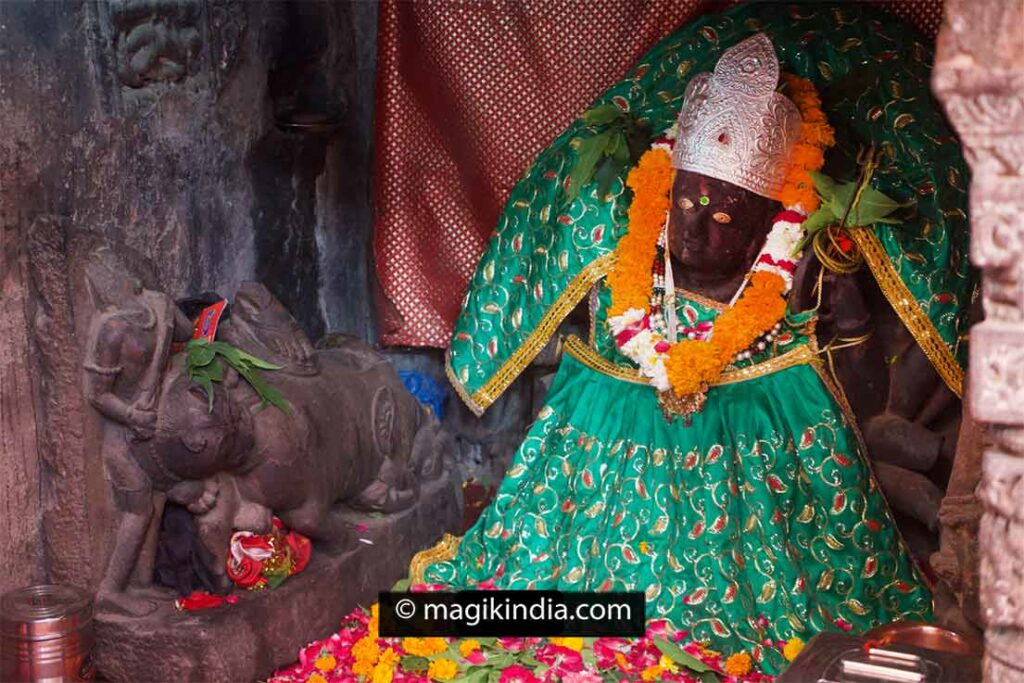
I am exceptionally authorized to take a photo of the Bheruji statue which includes three bodies roughly carved into the rock. An eternal oil lamp burns before the deity. I also take the opportunity to take a few photos of ancient statues at the back of the temple.
As I walk up the steps towards the exit, a group of worshipers enter the sanctuary with bottles of whiskey in their hands. In North India, giving alcohol as an offering to certain deities like Shiva or Durga is completely normal, it is one of the practices of tantra.

A popular legend says that Bheruji is the brother of Jeen Mata, the goddess of power, avatar of Durga, whose temple is at the foot of Harshagiri hill. It is customary for Hindu devotees to first go to the Jeen Mata temple, a major Shakti peeth pilgrimage site, before honoring Bheruji.
